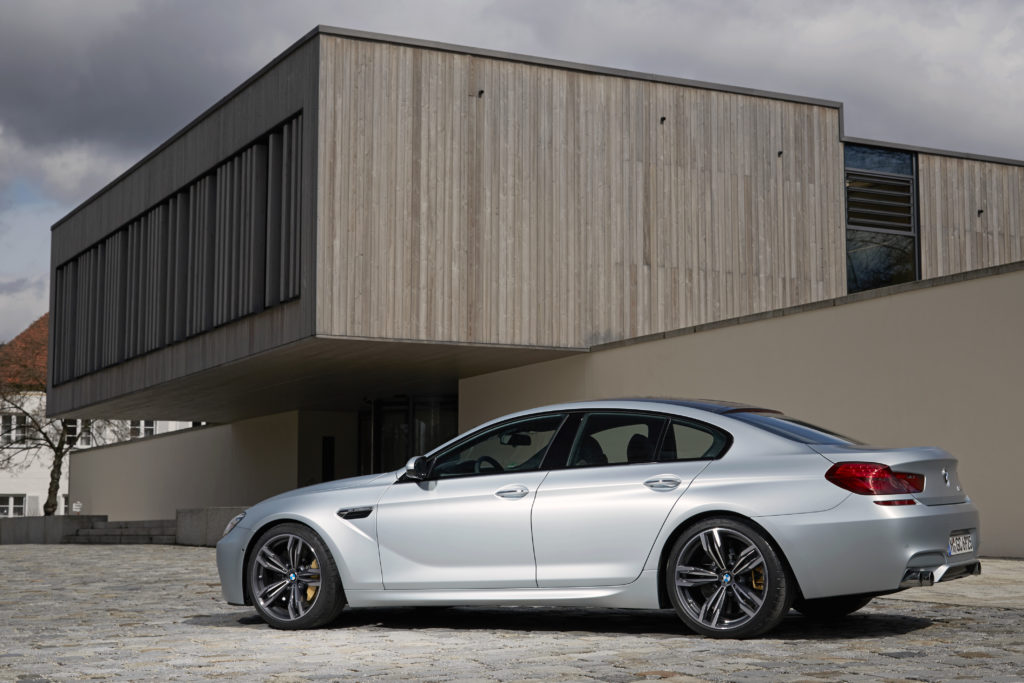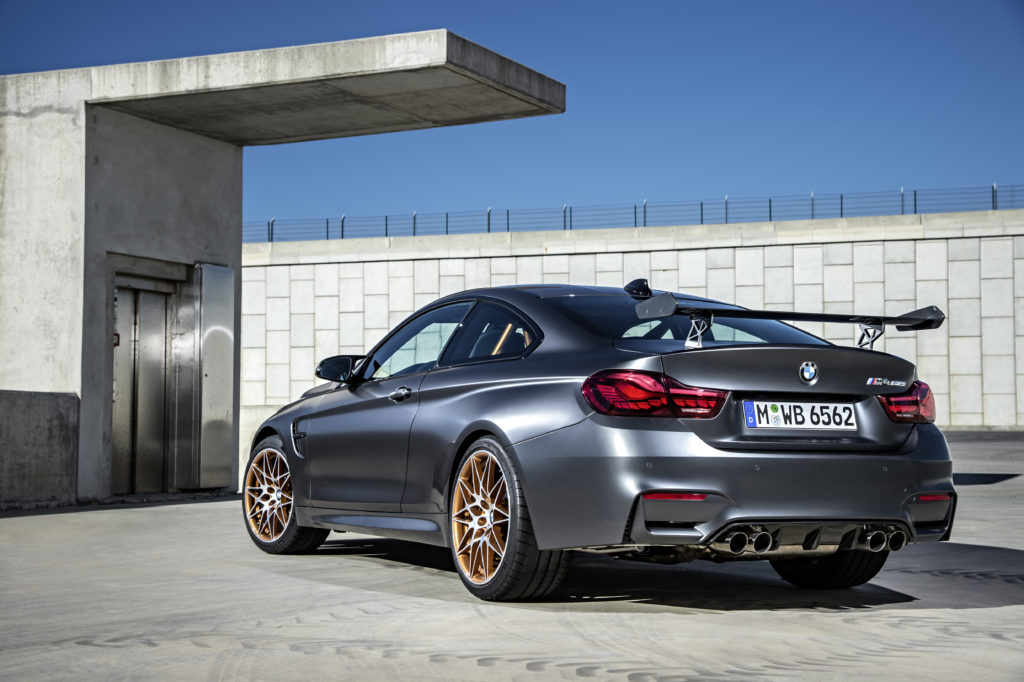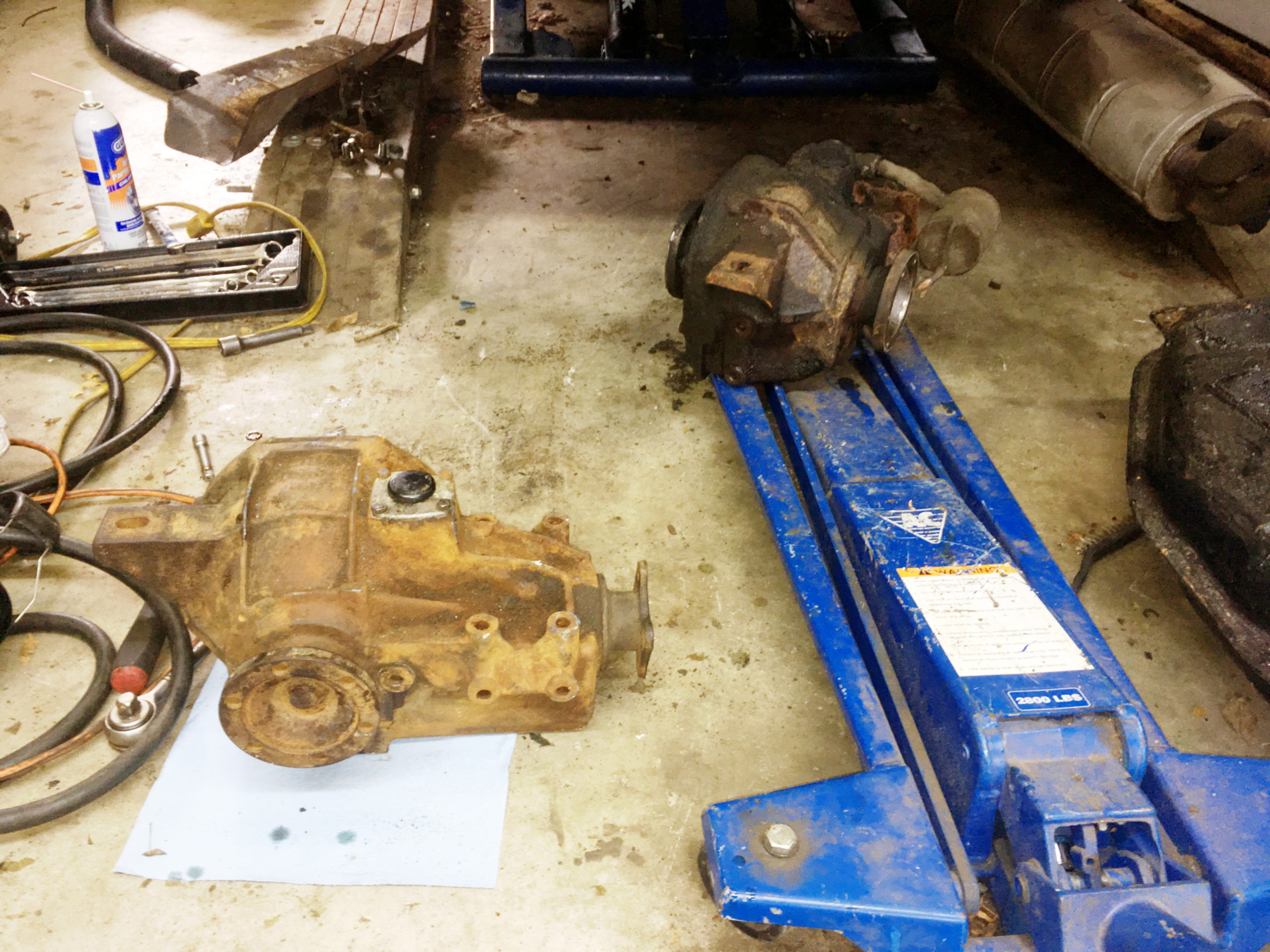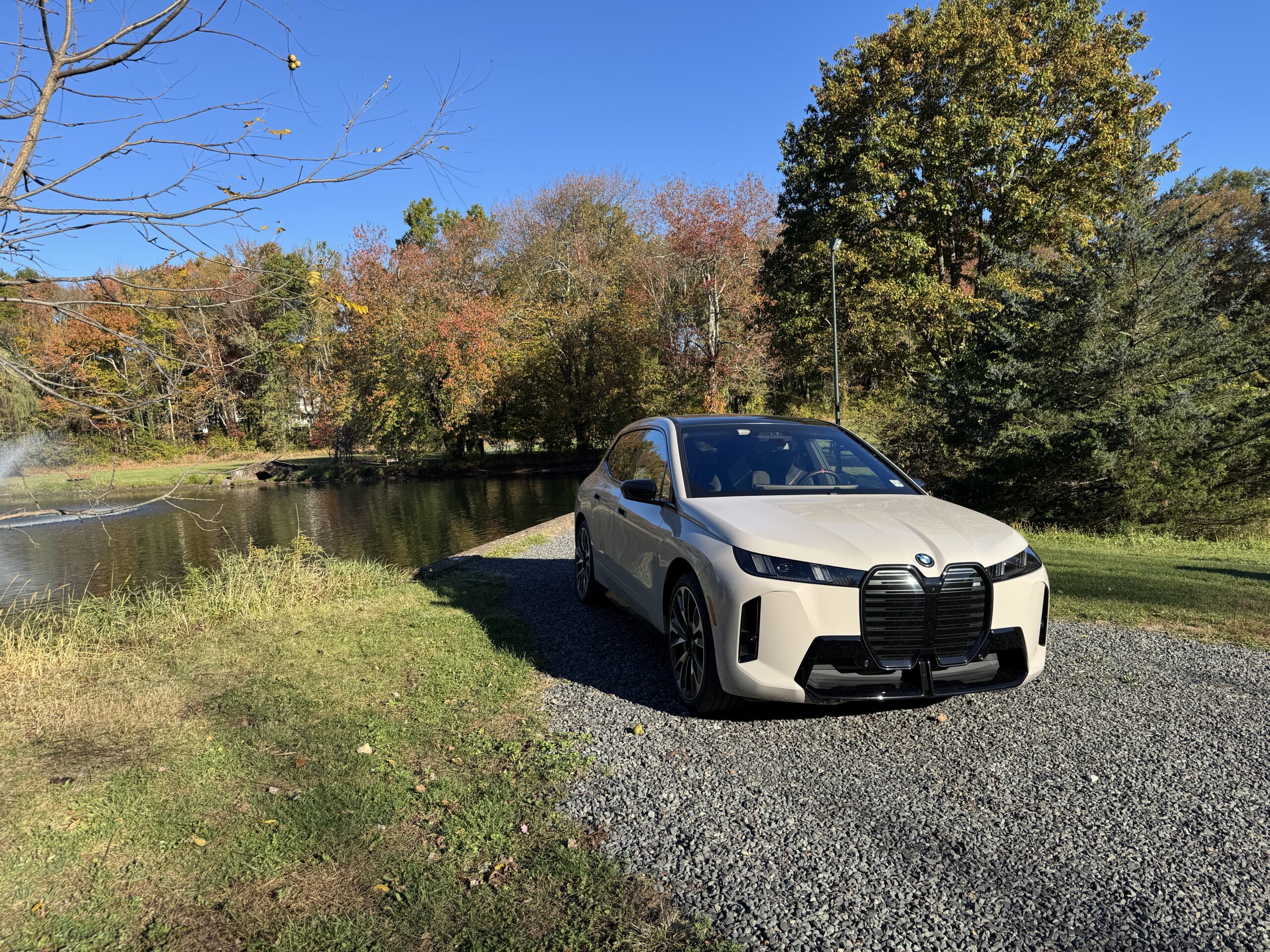BMW is on the cusp of a veritable sea change right now, with characteristics that were once hallmarks of the brand giving way so that new levels of performance, practicality and efficiency can be attained. Age-old traditions are ceding to new concepts and technologies—but those behind the corporate curtain still seem ingrained with the ideals of continuing to refine the ultimate driving machine, now with a specific model for almost any occasion.
Technology has always played a rather large role in automotive development and evolution, and BMW is among most prominent industry forces in this regard. The cutting-edge features of yesteryear become commonplace as standard equipment after just a few model generations, and lately, things only seem to be accelerating. BMW has put numerous now-proven technologies to work in some of their most memorable models over the years, and over the next few weeks, we’ll go over a few lists that summarize the most captivating. Without further adieu, here is our compiled list of the top 10 turbocharged BMWs.
10. F90 M5

The F90 M5 was released less than a year ago, but in the short time it’s been available, the model has served as a game-changer for BMW. Forum pundits and others balked at the idea of an AWD M car, but BMW pulled off the transition with masterful deft. While other competitors push an underlying FWD-based drivetrain to a variety of market segments, the F90 M5 offers features that no other car—let alone a BMW—has, such as the proprietary M xDrive system which can be switched to route power exclusively to the rear when desired.
The current M5 is also powered by a potent yet highly efficient M twin-turbo V8, which packs features like high-pressure precision direct injection, Valvetronic, and a few others you’ll be reading about on this list.
The F10 M5 that came before was capable of reaching awe-inspiring speeds on road courses, and the heart of that car has evolved and been refined as the years have come and gone. The current S63B44T4 engine found in the F90 is juiced by a pair twin-scroll turbochargers pushing 24.46 PSI of boost, making for factory-rated output of 600 horsepower from 5,700 rpm to 6,600, with 553 pound-feet of torque available from 1,800 rpm to 5,700. These numbers translate to the 4,200-pound sedan having the capability of sprinting to 60 mph in just 3.2 seconds, and the M5 Competition variant is even faster.
9. M6 Gran Coupé

BMW did not invent the four-dour swooping coupe segment, but the current-generation 6 Series and M6 Gran Coupé have taken a substantial bite out of competition from Audi and Mercedes-Benz. Each of those brands offers a similarly powerful performance version of their high-line four-dour coupe, such as the CLS 63S AMG or RS7, but over five years after the M6 GC was introduced, it remains a popular model within the lineup thanks to its eye-catching presence and unique design language.
The M6 Gran Coupé shares much of its underlying design and architecture with the F10 M5, and the same applies to the drivetrain and engine. The S63B44T0 V8 fitted to the M6 Gran Coupé was the first M engine to use Valvetronic variable valve lift, and thanks to twin-scroll turbochargers working with a pulse-tuned exhaust manifold, it develops 553 horsepower from 6,000 to 7,000 rpm with 500 pound-feet of torque available across a wide plateau from 1,500 rpm to 5,750. The M6 Gran Coupé uses BMW’s previous seven-speed M DCT transmission to route power to the rear Michelin tires, and the platform is expected to be phased out before long—most likely replaced by the 8 Series version.
8. M760Li xDrive

V12 range-topping executive cars are beginning to be pared from manufacturer offerings, with Mercedes-Benz handing all future development of twelve-cylinder engines over to AMG a few years ago. Audi and VW have also always gone a different route with their incredibly complex W8 and W12 engines, which makes the M760Li xDrive the only V12-powered car with AWD currently available, according to BMW.
BMW began producing their first V12, the M70, back in 1987. In the three decades since, quite a bit has changed, but the underlying design of the initial iteration helped put the marque on the map within the top-performance circles. More recently, the addition of camshafts, valves, technology, and turbochargers has helped to keep the lauded engine design on the map. The unit capable of rocketing the nearly 5,000-pound M760Li from zero to 60 in a approximately 3.5 seconds is the N74B66TU. In production since 2016, the V12 displaces 6.6 liters and uses direct injection, double VANOS, and twin turbochargers mounted outside of the cylinder banks to produce 601 horsepower at 5,500 rpm, with 590 pound-feet of torque arriving at 1,500. All of this translates to current 7 Series range-topper being among the fastest and most powerful models produced by the marque.
7. M4 GTS

The M4 GTS had a limited production run that ceased some time ago, but there are still a handful of factory-new examples available. This model made our illustrious list owing to the fact that, for a short period, it was the absolute most hardcore street-legal offering to wear a roundel. Sure, there are the factory race cars like the M235i Racing or the M4 GT4, which we are glad exist because Porsche needs a bit of competition in that department, but the M4 GTS can be driven to and from the track under its own power.
The model was watered down slightly for North America by way of different airbag-equipped seats and non-OLED taillights, but the performance of the water-injected S55 engine was not. Fed by a 1.3-gallon tank mounted beneath the trunk floor, the M4 GTS can produce up to 500 horsepower at 6,250 rpm with 442 pound-feet of torque between 4,000 and 5,500. Those numbers equate to a Nurbürgring time in the mid-seven-minute range; other highlights include a color-coordinated interior cage and numerous other weight-reducing changes.
6. 135i and 335i

It’s hard to believe that BMW introduced their first turbocharged direct-injected engine over ten years ago in the form of the N54, but the influence on the brand and its enthusiasts since has been undeniable. Although the N55 took the place of its predecessor after just a few years in terms of regular production models, it is the initial N54 that has proven itself as one of the marque’s most capable engines.
Early 135i and 335i BMWs are powered by the N54 engine, which is an evolution of the previous naturally aspirated M54, but with the addition of twin turbochargers and piezo-based direct injection. Stock output was a memorable 300 horsepower at 5,800 rpm and 300 pound-feet of torque from 1,400 to 5,000. Despite teething problems related to the direct-injection design and other parts of the fuel system, these engines have become a favorite for tuners who are after big power—builds that can challenge the likes of heavily modified Toyota Supras and the like are now commonplace.
The N55 engine came along midway through production, and offered a clean-sheet design with solenoid-type direct injection and Valvetronic intake, which resulted in an output of 302 horsepower at 4,005 rpm through 6,000 and 295 pound-feet of torque from just 1,200 rpm all the way to 4,000. Along with improved reliability, the N55 has been catching up to the N54 in terms of tuning capability, with more than a few examples swinging well above their weight class on the drag strip.
The smallest and currently most affordable cars these engines came fitted in were the E82 135i and E90 335i, both of which have depreciated nicely. With proper maintenance and light tuning, these cars are remain a force to be reckoned with on the road course or freeway, and much of that is owed to their turbochargers.
5. 1 Series M Coupe

The 1 Series M Coupe was one of those rather unexpected surprises where BMW gave the customer exactly what they wanted before the notion had even occurred to the general public. The years have been exceptionally kind to the 1M, as residual values have translated to original owners having made one of their best financial decisions in buying one. These still cars fetch a healthy margin above their original MSRP, and the release of the M2 has done very little to dampen enthusiasm. Hydraulic steering and M3 running gear translate to one of the most enjoyable and rewarding modern BMW driving experiences, while M aerodynamic mirrors and heavily flared fenders set things apart from the pedestrian models.
The 1M gets its motivation in spades from an M-tuned variant of the N54, which also saw use in the Z435is roadster. The underlying architecture and design is nearly identical to the garden-variety N54, but with slight modifications and software adjustments that result in 340 horsepower peaking at 5,900 rpm and 331 pound-feet of torque, plus an addition a 37 pound-feet available under overboost from 1,500 rpm to 4,500.
4. 2002 Turbo

This list wouldn’t be complete without mentioning the 2002 Turbo. Initially unveiled at the 1973 Frankfurt Motor Show, its production would extend only until the next year, with just 1,672 examples resulting, but the 2002 was the very first turbocharged production BMW. It was also among the first turbocharged vehicles of from any marque, beat to market roughly ten years prior by the Oldsmobile Jetfire. Boosting the 2002 chassis proved successful, and the extra power only increased the potency of an already highly enjoyable yet practical platform.
The specific production code of the M10 SOHC four-cylinder used in the 2002 Turbo was M31, and these units came equipped with Kugelfischer P04 mechanical fuel injection, which is modulated via a sliding throttle plate and a single KKK turbocharger. Compression was expectedly lower than naturally aspirated versions at 6.9:1, but output was a highly respectable 170 horsepower at 5,800 rpm with 180 pound-feet of torque peaking at 4,000.
3. E23 745i

The first 745i was another important step for BMW in the world of forced induction. Based on the E23 733i and later 735i, the 745i boasted power not far off from the era’s supercars, and although they were sold only in Europe, a few examples have trickled over to the U.S., either via gray-market importation or the 25-year rule. High-line factory options included power adjustable rear seats, stereo controls fitted in the rear armrest, a leather-wrapped car phone, and burl wood trim, while some were also ordered with water buffalo interior upholstery (which hasn’t aged particularly well).
Offered from 1979 until 1983, early 745i’s use what’s referred to as the M102 engine, essentially an M30B32 fitted with a KKK turbocharger pushing nine PSI worth of boost. Things were updated to the M106 engine for 1982; that was based on the M30B34 with Motronic digital engine management and a turbo generating six PSI. Factory-rated output between the two was nearly identical with 248 horsepower and 276 pound-feet of torque on tap, occurring at slightly lower rpm in later cars.
2. Alpina B10 BiTurbo

The Alpina B10 BiTurbo represents what could still be considered a pinnacle for turbocharged BMWs. Although slightly outside our criteria for this list owing to its offsite design and construction, any summation of memorably forced-induction roundel-wearing cars would include the B10 BiTurbo. Just 507 examples were manufactured from 1989 until 1994, and over $3,200,000 was invested in development. They’re still respectably fast today, and one of the coolest features is the Bosch variable boost control knob within the cabin. Other highlights include Bilstein dampers installed from the factory, along with front Girling brakes larger than those of the counterpart M5.
The E34 535i was used as the underlying basis for the B10 BiTurbo, as its M30 engine had proven itself robust when it came to accepting forced induction. In addition to forged Mahle pistons, the 3.4-liter unit of the B10 also benefits from a pair of Garrett T25 water-cooled turbochargers, which had adjustable boost ranging from approximately six to twelve PSI. Turning the boost up to max resulted in period-advertised output of 360 horsepower at 6,000 rpm with 384 pound-feet of torque peaking at 4,000.
1. M2
The M2 tops this list few a few simple reasons, the first being that it is perhaps the most fun-to-drive BMW currently available. The community was skeptical before the M2 became a reality, and the verdicts came in, citing a number of rather odd complaints about idiosyncrasies between the new model and other M cars. Much of the grumbling seems to have subsided, because owners and journalists alike have come to agree that the M2 is an excellent return to form for the brand, offering exhilarating driving dynamics in a small, affordable package.
The initial M2 came from the factory with an M-tuned N55 turbo six, based upon the underlying design that was also used in the aforementioned 135i and other models that followed. Advanced technologies like double VANOS, Valvetronic, and precision direct injection are all at work, and make for stock output of 365 horsepower at 6,500 rpm with 369 pound-feet of torque enjoying a lengthy plateau from 1,450 to 4,750.
Emissions regulations prompted the discontinuation of the N55 during 2018, which translated to the upcoming M2 Competition being fitted with a slightly detuned S55 engine from the current M4. Power (and likely tuning potential) has been increased, with the engine generating 404 horsepower from 5,370 rpm to 7,000 and 406 pound-feet of torque from 2,350 to 5,230 rpm.
Honorable Mention: 228i/230i coupe

BMW fans love to talk about spiritual successors of the 2002, and the best current embodiment of the model that helped put BMW on the map is the 230i (formerly the 228i). Forums pundits and others like to malign the base-model sport coupe for its four-cylinder engine and lack of features in comparison with competition from Audi or Mercedes, but the BMW has proven itself as an enthusiast model in disguise in the years since its 2014 introduction.
Outfitted properly, a 228i or 230i can offer an exhilarating driving experience which is not commonly found in similarly priced counterparts. Even better, less power equates to more fun on a daily basis, where the current crop of M cars must be taken to a track to have their legs stretched. A few years back, Road & Track published an excellent comparison of the entire 2 Series lineup in addition to the M2 and 1M. You might be surprised to see which model came out on top.—Alex Tock
[Photos courtesy BMW AG.]





















